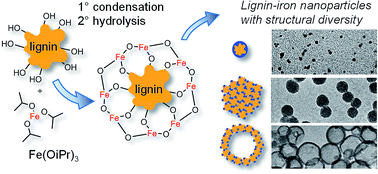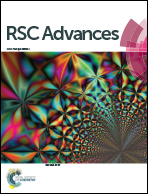Structural diversity in metal–organic nanoparticles based on iron isopropoxide treated lignin†
Abstract
The magnetic nature of iron-containing nanoparticles enables multiple high-end applications. Metal alkoxides are a highly reactive chemical species, which are widely used in ceramics and sol–gel manufacture. However, their use with organic molecules has been mostly limited to catalytic purposes due to their highly reactive nature. Lignin is the second most abundant biopolymer in the world-rich in OH groups and amenable to highly stable colloid nanoparticle formation by a simple solvent exchange process. Here we show that the reaction between iron isopropoxide and lignin in tetrahydrofuran (THF) solution produces metal–organic nanoparticles with tunable morphologies, ranging from hollow and solid nanospheres to open network structures. The immediate condensation reaction between lignin and iron isopropoxide as well as the resulting structure morphology can be controlled by varying the reaction parameters. Despite iron isopropoxide being highly water sensitive, the formed structures are stable as water suspensions. Our results demonstrate that solution processable metal–organic nanoparticles can be easily produced with macromolecular polyols in an inert solvent, such as THF. This presents a facile method of obtaining various metal–organic nanomaterials, with a wide range of metal alkoxides and organic polyols to choose from. We anticipate that metal–bioorganic sol–gel reactions will produce biocompatible materials with enhanced functionality, such as magnetic, antibacterial and catalytic properties depending on the chosen metal and polyol.


 Please wait while we load your content...
Please wait while we load your content...